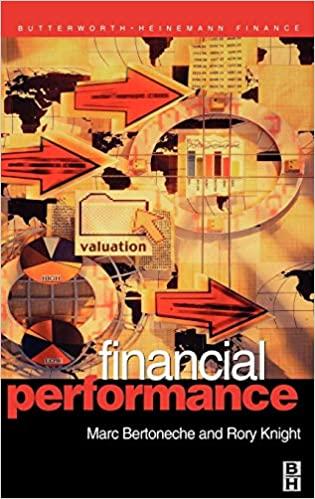Question
John and Marsha on Portfolio Selection The scene: John and Marsha hold hands in a cozy French restaurant in downtown Manhattan, several years before the
John and Marsha on Portfolio Selection The scene: John and Marsha hold hands in a cozy French restaurant in downtown Manhattan, several years before the mini-case in Chapter 9. Marsha is a futures-market trader. John manages a $250 million common-stock portfolio for a large pension fund. They have just ordered tournedos financiere for the main course and flan financiere for dessert. John reads the financial pages of The Wall Street Journal by candlelight. John: Wow! Potato futures hit their daily limit. Let's add an order of gratin dauphinoise. Did you manage to hedge the forward interest rate on that euro loan? Marsha: John, please fold up that paper. (He does so reluctantly.) John, I love you. Will you marry me? John: Oh, Marsha, I love you too, but there's something you must know about mesomething I've never told anyone. Marsha: (concerned) John, what is it? John: I think I'm a closet indexer. Marsha: What? Why? John: My portfolio returns always seem to track the S&P 500 market index. Sometimes I do a little better, occasionally a little worse. But the correlation between my returns and the market returns is over 90%. Marsha: What's wrong with that? Your client wants a diversified portfolio of large-cap stocks. Of course, your portfolio will follow the market. John: Why doesn't my client just buy an index fund? Why is he paying me? Am I really adding value to active management? I try, but I guess I'm just anindexer. Marsha: Oh, John, I know you're adding value. You were a star security analyst. John: It's not easy to find stocks that are truly over- or undervalued. I have firm opinions about a few, of course. Marsha: You were explaining why Pioneer Gypsum is a good buy. And you're bullish on Global Mining. John: Page 217Right, Pioneer. (Pulls handwritten notes from his coat pocket.) Stock price $87.50. I estimate the expected return as 11% with an annual standard deviation of 32%. Marsha: Only 11%? You're forecasting a market return of 12.5%. John: Yes, I'm using a market risk premium of 7.5% and the risk-free interest rate is about 5%. That gives 12.5%. But Pioneer's beta is only .65. I was going to buy 30,000 shares this morning, but I lost my nerve. I've got to stay diversified. Marsha: Have you tried a modern portfolio theory? John: MPT? Not practical. Looks great in textbooks, where they show efficient frontiers with 5 or 10 stocks. But I choose from hundreds, maybe thousands, of stocks. Where do I get the inputs for 1,000 stocks? That's a million variances and covariances! Marsha: Actually only about 500,000, dear. The covariances above the diagonal are the same as the covariances below. But you're right, most of the estimates would be out-of-date or just garbage. John: To say nothing about the expected returns. Garbage in, garbage out. Marsha: But John, you don't need to solve for 1,000 portfolio weights. You only need a handful. Here's the trick: Take your benchmark, the S&P 500, as security 1. That's what you would end up with as an indexer. Then consider a few securities you really know something about. Pioneer could be security 2, for example. Global, security 3. And so on. Then you could put your wonderful financial mind to work. John: I get it: active management means selling off some of the benchmark portfolios and investing the proceeds in specific stocks like Pioneer. But how do I decide whether Pioneer really improves the portfolio? Even if it does, how much should I buy? Marsha: Just maximize the Sharpe ratio, dear. John: I've got it! The answer is yes! Marsha: What's the question? John: You asked me to marry you. The answer is yes. Where should we go on our honeymoon? Marsha: How about Australia? I'd love to visit the Sydney Futures Exchange.
a. This table reproduces John's notes on Pioneer Gypsum and Global Mining. Calculate the expected return, risk premium, and standard deviation of a portfolio invested partly in the market and partly in Pioneer. (You can calculate the necessary inputs from the betas and standard deviations given in the table. Hint: A stock's beta equals its covariance with the market return divided by the variance of the market return.) Does adding Pioneer to the market benchmark improve the Sharpe ratio? How much should John invest in Pioneer and how much in the market?
Pioneer Gypsum | Global Mining
Expected Return 11.0% | 12.9%
Standard deviation 32% | 24%
Beta .65 | 1.22
Stock Price $87.50 | $105.00
b. Repeat the analysis for Global Mining. What should John do in this case? Assume that Global accounts for .75% of the S&P index. (Assume a market standard deviation of 16%.)
Step by Step Solution
There are 3 Steps involved in it
Step: 1

Get Instant Access to Expert-Tailored Solutions
See step-by-step solutions with expert insights and AI powered tools for academic success
Step: 2

Step: 3

Ace Your Homework with AI
Get the answers you need in no time with our AI-driven, step-by-step assistance
Get Started


